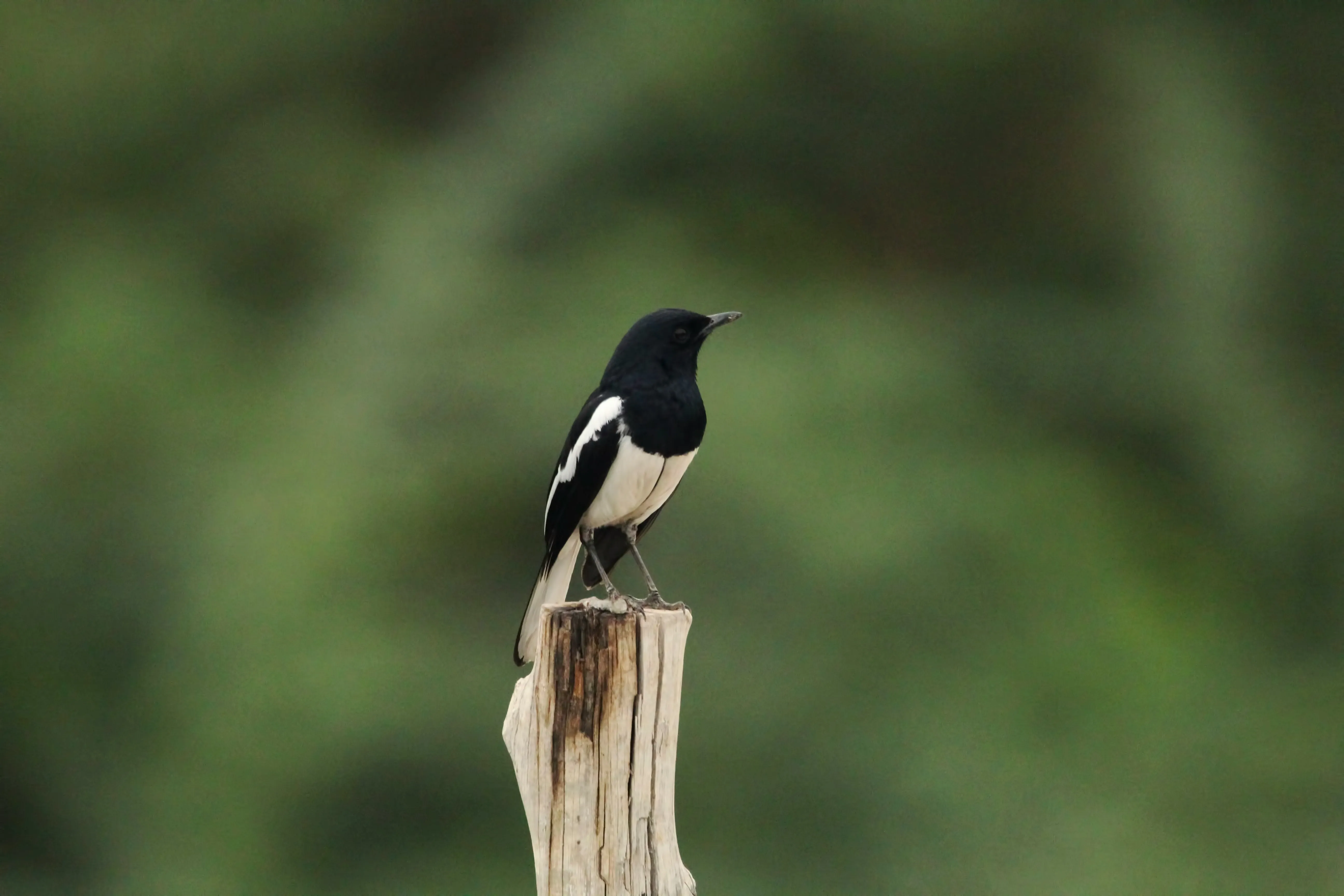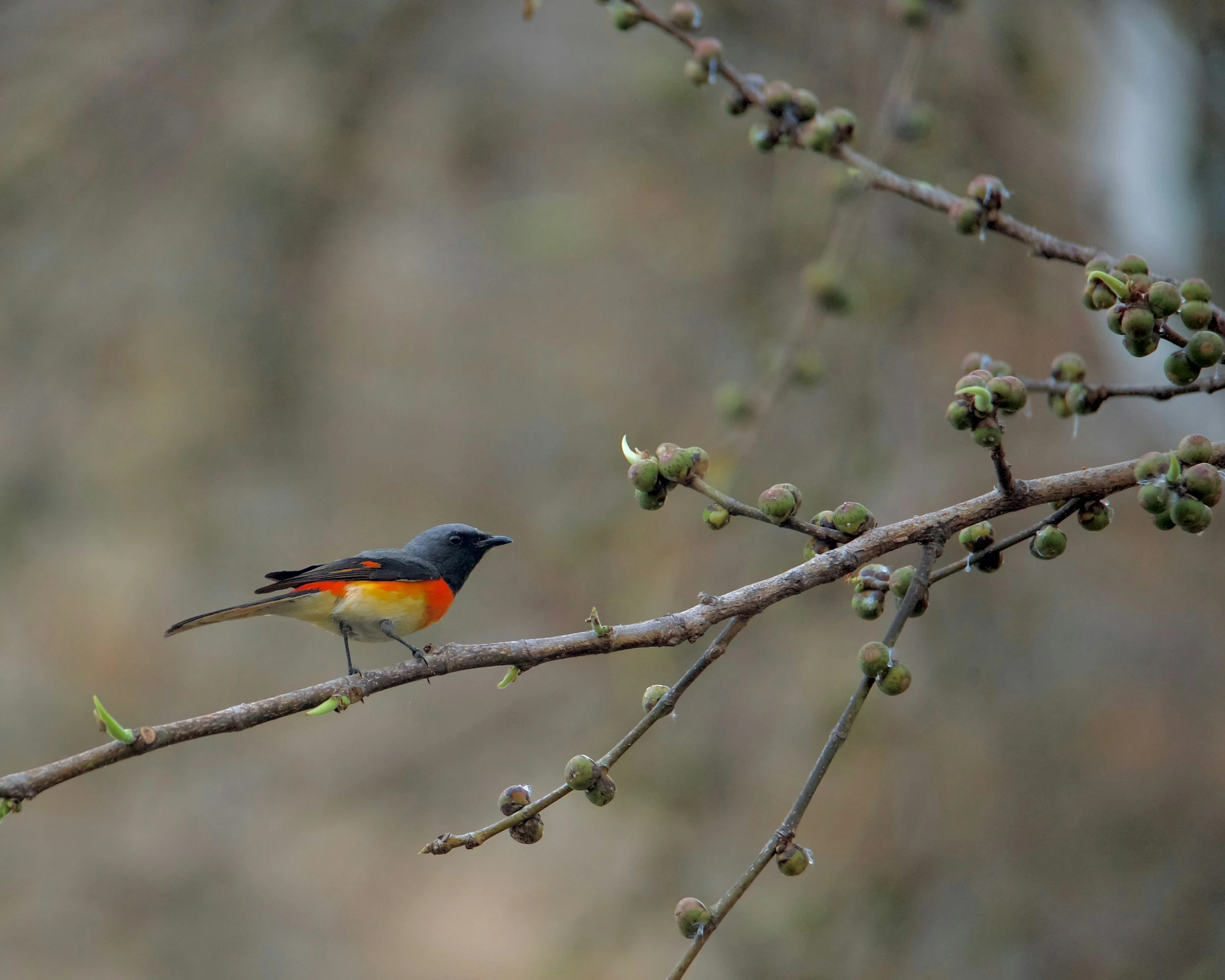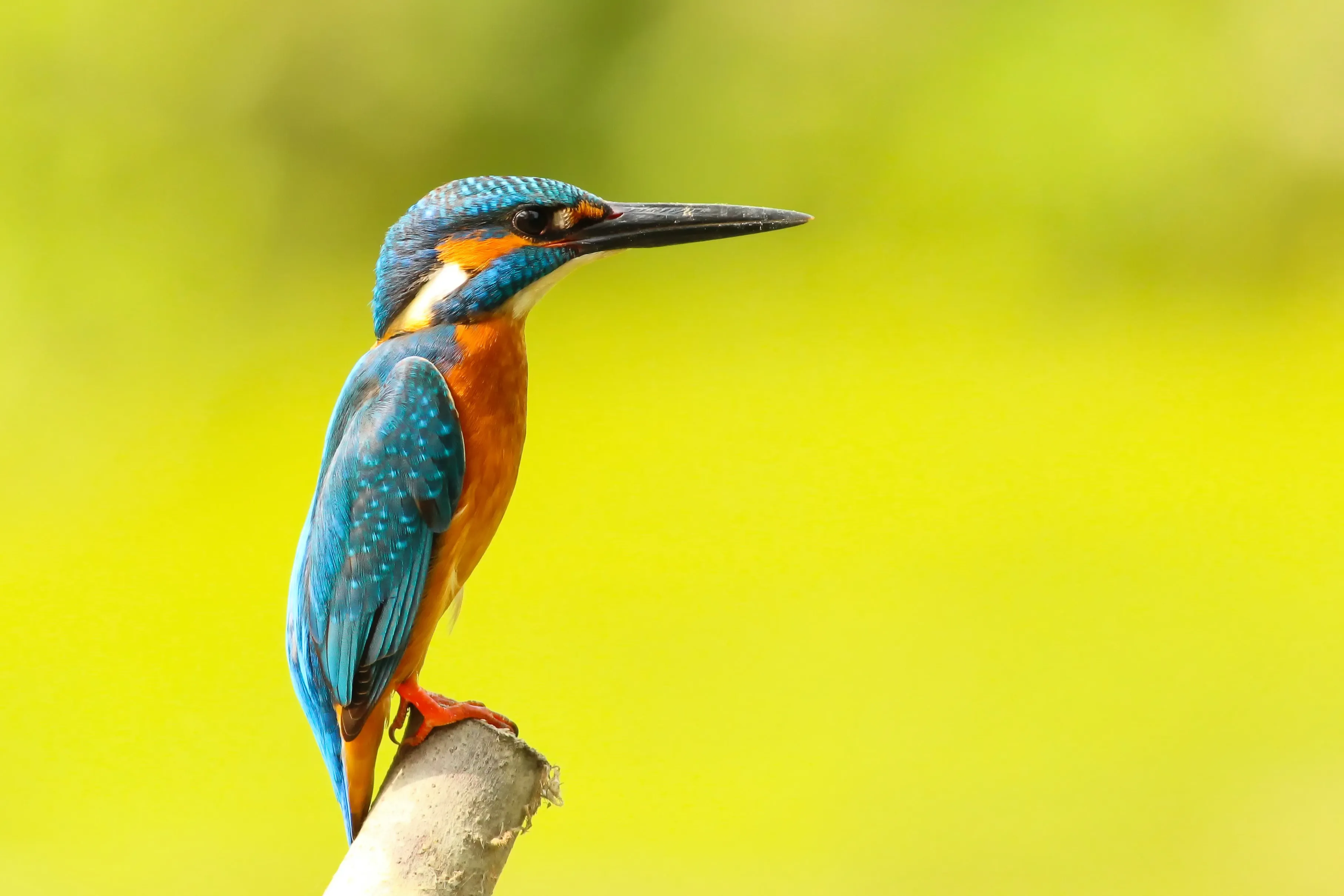BIRDING IN SUNDARBAN | BIRD WATCHING AT SUNDARBAN
BIRDING IN SUNDARBAN | BIRD WATCHING AT SUNDARBAN
Table of Contents
Sundarban Bird Festival
Sundarbans: A Birder's Paradise
Nestled on the delta of the Bay of Bengal, Sundarbans
emerges as a birder's paradise, a sanctuary where nature reveals its artistic
prowess. Home to over 248 bird species, this enchanting haven boasts a rich
tapestry of biodiversity. As dawn breaks, herons, egrets, and storks gracefully
paint the skies, turning the landscape into a living canvas. The elusive Small
Minivet and majestic Grey-headed Fishing Eagle add splashes of color to this
avian masterpiece.
Check Out : Sundarban Honey Price Online
Navigating through Sundarbans offers a unique adventure.
Overcoming geographical hurdles, you become part of this grand spectacle, where
the chorus of bird songs fills the air. The Cinnamon Bittern and Swamp
Francolin contribute subtle notes to the symphony, creating a harmonious blend
of wilderness and melody. This birder's haven not only provides a visual feast
but also a captivating auditory experience, each bird's call weaving a story of
its own.
Sundarbans: A Feathered Haven
Step into Sundarbans, and you'll find yourself in a
feathered haven, a realm where nature's beauty is adorned with the plumage of
countless avian wonders. The Black-hooded Oriole and the melodious songs of the
Swamp Francolin welcome you to a sanctuary that transcends the ordinary. Every
tree, every waterway is a stage where birds showcase their unique talents,
turning Sundarbans into an amphitheater of nature's grandeur.
As you delve into this feathered haven, the stories of birds
unfold – the Osprey's skillful dives, the Purple Heron's elegant wading, and
the exquisite dance of the Black-capped Kingfisher. Sundarbans becomes more
than a destination; it transforms into a living, breathing storybook where each
bird is a character with its narrative waiting to be discovered.
The Art of Birding in Sundarbans
Embark on an exploration of "The Art of Birding in
Sundarbans," where every moment is a stroke of nature's brush. This
sanctuary isn't merely a habitat; it's a masterpiece in progress. The
brilliance of the Small Minivet, the vibrant hues of the Purple Sunbird, and
the stealthy flight of the Brown Fish Owl create a living canvas, capturing the
essence of wild beauty.
Capturing this artistry isn't just a visual endeavor; it's
an immersion into the emotions of the wilderness. The rustling mangroves, the
calls of unseen birds – it's a sensory experience that transcends the ordinary.
Sundarbans beckons you not just to observe but to feel, allowing the art of
birding to become an intimate connection with nature's grand design.
PlanYour Birding Expedition in Sundarbans
Embarking on a birding expedition in Sundarbans promises an
immersive journey into the heart of one of the world's most diverse ecosystems.
To make the most of this avian adventure, meticulous planning is key. Let's
delve into the details to ensure your birding escapade in Sundarbans is
seamless and memorable.
1. Researching the Avian Wonders
Before setting foot in Sundarbans, arm yourself with
knowledge about the diverse bird species that call this delta home. The park
hosts approximately 248 bird species, including migratory birds that make a
winter sojourn. Familiarize yourself with the habits, habitats, and distinctive
features of key species like the Small Minivet, Black-hooded Oriole, and
Grey-headed Fishing Eagle.
2. Right Time to Visit
Sundarbans unveils different facets of its avian wonders
with each season. Plan your expedition based on your birding preferences.
Winter months attract migratory birds, offering a chance to witness a bustling
avian community. However, the monsoon season brings a different charm, with
lush greenery and a more serene atmosphere. Consider your preferences and the
specific birds you wish to encounter when deciding on the timing of your visit.
3. Selecting Accommodations Wisely
Sundarbans presents a unique blend of wilderness and
hospitality. Choose accommodations that align with your birding goals. Opt for
lodges or resorts with knowledgeable guides and proximity to bird-rich areas.
This ensures that your mornings start with the melodies of resident and
migratory birds.
4. Navigating the Terrain
Sundarbans' intricate network of waterways and dense
mangrove forests requires strategic navigation. Consider guided boat tours for
a close encounter with avian wonders. These excursions not only provide
excellent vantage points for birding but also offer a unique perspective on the
delta's ecosystem. Ensure that your chosen tour includes both popular birding
spots and off-the-beaten-path locations.
SUNDARBAN BIRD WATCHING
5. Equipping Yourself for Bird Photography
Capture the essence of Sundarbans' avian diversity by
packing the right photography gear. A high-quality camera with a good zoom lens
is essential for photographing birds in their natural habitat. Additionally,
carry extra batteries, memory cards, and lens cleaning kits to avoid missing
out on any photographic opportunities.
6. Adhering to Park Regulations
Respect for the environment and its inhabitants is
paramount. Familiarize yourself with the park's regulations to minimize your
ecological impact. Follow designated trails, maintain a respectful distance
from wildlife, and adhere to ethical birding practices. Responsible birding
ensures the preservation of this natural wonder for future generations.
7. Hiring Knowledgeable Guides
Maximize your birding experience by engaging local guides
well-versed in Sundarbans' avian life. Their expertise enhances your chances of
spotting elusive species and gaining insights into the behaviors of resident
and migratory birds. A knowledgeable guide adds depth to your expedition,
turning it into an educational and enriching journey.
By meticulously planning your birding expedition in
Sundarbans, you unlock the gateway to a realm where every rustle of leaves and
every bird call contribute to the symphony of nature. With each step,
Sundarbans reveals its avian wonders, ensuring your birding venture becomes an
unforgettable odyssey.
The Celebrities of Sundarbans Birding
Embarking on a birding escapade in Sundarbans is akin to
stepping onto a red carpet where avian celebrities take center stage. This
delta, home to around 248 bird species, unfolds a star-studded spectacle that
will leave any bird enthusiast in awe. Let's roll out the avian red carpet and
introduce you to the celebrities of Sundarbans birding.
Small Minivet: The Dapper Showstopper
With its vibrant plumage and elegant demeanor, the Small
Minivet steals the spotlight effortlessly. This dapper showstopper graces the
Sundarbans with its presence, adding a burst of color to the mangrove
landscape.
Grey-Headed Fishing Eagle: The Majestic Monarch
In the realm of raptors, the Grey-Headed Fishing Eagle
reigns supreme. Its majestic appearance and keen hunting prowess make it the
undisputed monarch of the Sundarbans skies, casting a regal presence over the
delta.
Black-Hooded Oriole: The Feathered Maestro
With its melodious tunes, the Black-Hooded Oriole assumes
the role of the feathered maestro in Sundarbans' avian orchestra. Its vibrant
plumage and enchanting song make it a sought-after celebrity among birding
enthusiasts.
Cinnamon Bittern: The Elegance in Camouflage
Navigating the marshy landscapes of Sundarbans with
unparalleled elegance, the Cinnamon Bittern is a master of camouflage. Its
subtle yet striking appearance adds a touch of grace to the wetlands, making it
a celebrated star in the birding community.
Osprey: The Aerial Virtuoso
Swooping down with unparalleled grace, the Osprey is the
aerial virtuoso of Sundarbans. Its skilled fishing maneuvers and commanding
presence in the sky elevate it to celebrity status, capturing the admiration of
birdwatchers.
Purple Heron: The Graceful Diva
Wading through the shallow waters with poise, the Purple
Heron emerges as the graceful diva of Sundarbans. Its long-legged elegance and
regal presence make it a celebrity sighting, captivating onlookers with every
step.
Brown-Cheeked Fulvetta: The Sociable Songster
In the dense underbrush, the Brown-Cheeked Fulvetta emerges
as the sociable songster. Its melodious calls resonate through the mangroves,
creating a harmonious ambiance and earning it a special place in the avian
celebrity lineup.
As you traverse the waterways and trails of Sundarbans, keep
your binoculars poised and your camera ready to capture glimpses of these avian
celebrities. Each bird species adds a unique charm to the delta's allure,
turning your birding expedition into a star-studded affair. Join the ranks of
avid birdwatchers who have witnessed the celestial beauty of Sundarbans'
feathered celebrities, and let the avian red carpet guide you through this
mesmerizing delta.
Main Attractions: The Stellar Cast
Keep your eyes peeled for the avian celebrities of Sundarbans:
- Small Minivet
- Black-hooded Oriole
- Mangrove Whistler
- Cinnamon Bittern
- Swamp Francolin
- Grey-headed Fishing
Eagle
- Brown Fish Owl
- Osprey
- Purple Sunbird
- Pale-billed
Flowerpecker
- Loten’s Sunbird
- Striated Babbler
- Striped Tit-Babbler
- Brown-cheeked
Fulvetta
- Lemon-rumped Warbler
- Brown-winged
Kingfisher
- Purple Heron
- Asian Openbill Stork
- Greater Adjutant
Stork
- Black-capped
Kingfisher
- Asian Dowitcher
- Northern Eagle Owl
- Common Woodshrike
- Gull-billed Tern
- Common Flameback
- Fulvous-breasted
Woodpecker
- Peregrine Falcon
- White-collared
Kingfisher
- Northern Pintail
- White-bellied Sea
Eagle
- White Ibis
- Black-necked Stork
- Green-backed Heron
- Pallas’s Fish Eagle
- Scaly-breasted Munia
- Tree Pipit
- Yellow Wagtail
- Baya Weaver
- House Sparrow
- Purple Sunbird
- Pale-billed
Flowerpecker
- Loten’s Sunbird
- Striated Babbler
- Striped Tit-Babbler
- Brown-cheeked
Fulvetta
- Lemon-rumped Warbler
- Indian Scimitar
Babbler
- Ashy Prinia
- Red-whiskered Bulbul
- Asian Pied Starling
- Blue-throated
Flycatcher
Sundarbans Birding Checklist: Must-See Species
Explore the Sundarbans with a Checklist in Hand
1. Red Junglefowl
2. Greater Coucal
3. Alexandrine Parakeet
4. Indian Roller
5. White-throated
Kingfisher
6. Common Hawk-Cuckoo
7. White-ramped Shama
8. Oriental
Magpie-Robin
9. Common Iora
10. Large Cuckoo shrike
11. Black-hooded Oriole
12. Common Woodshrike
13. Brown Shrike
14. Black-naped Monarch
15. Asian
Paradise-Flycatcher
16. Tickell's Blue
Flycatcher
17. White-browed
Fantail
18. Red-breasted
Flycatcher
19. Verditer Flycatcher
20. Rufous Treepie
21. Large-billed Crow
22. Jungle Crow
23. Bank Myna
24. Brahminy Starling
25. Common Myna
26. Jungle Myna
27. Asian Pied Starling
28. Common Starling
29. Common Rosefinch
30. Black-throated
Munia
31. White-rumped Munia
32. Scaly-breasted
Munia
33. Yellow-eyed Babbler
34. Jungle Babbler
35. Large Grey Babbler
36. Yellow-bellied
Prinia
37. Ashy Prinia
38. Plain Prinia
39. Zitting Cisticola
40. Golden-headed
Cisticola
41. Bengal Bush Lark
42. Greater Coucal
43. Jacobin Cuckoo
44. Common Hawk-Cuckoo
45. Indian Cuckoo
46. Pied Cuckoo
47. Barn Owl
48. Collared Scops Owl
49. Mottled Wood Owl
50. Brown Fish Owl
51. Spotted Owlet
52. Dusky Eagle Owl
53. Indian Scops Owl
54. Great Horned Owl
55. Crested Treeswift
56. House Swift
57. Brown-backed
Needletail
58. Asian Palm Swift
59. Little Swift
60. Stork-billed
Kingfisher
61. Common Kingfisher
62. Pied Kingfisher
63. White-throated
Kingfisher
64. Black-capped
Kingfisher
65. Collared Kingfisher
66. Ruddy Kingfisher
67. Common Hoopoe
68. Malabar Pied
Hornbill
69. Indian Grey
Hornbill
70. Great Hornbill
71. Green-billed
Malkoha
72. Greater Coucal
73. Asian Koel
74. Common Hawk-Cuckoo
75. Indian Cuckoo
76. Pied Cuckoo
77. Large Hawk-Cuckoo
78. Common Hawk-Cuckoo
79. Indian Cuckoo
80. Large Hawk-Cuckoo
81. Asian Barred Owlet
82. Spotted Owlet
83. Brown Fish Owl
84. Jungle Owlet
85. Collared Scops Owl
86. Mottled Wood Owl
87. Brown Fish Owl
88. Spotted Owlet
89. Collared Scops Owl
90. Mottled Wood Owl
91. Brown Fish Owl
92. Collared Scops Owl
93. Mottled Wood Owl
94. Brown Fish Owl
95. Collared Scops Owl
96. Mottled Wood Owl
97. Brown Fish Owl
98. Collared Scops Owl
99. Mottled Wood Owl
100. Brown Fish Owl
Bird Photography in Sundarbans: Snap and Smile! ( BIRDING IN SUNDARBAN )
If you love taking pictures of birds, then Sundarbans is
like a treasure chest of amazing moments. Let's talk about how cool it is to
take photos of birds there.
Sunrise Magic:
Imagine waking up super early when the sky is turning all
shades of orange and pink. That's when birds like the Black-Hooded Oriole start
singing. Catching this beautiful moment on your camera is like magic!
Osprey's Fishing Show:
There's this bird called Osprey, and it's like a superhero
at fishing. Picture this: the Osprey diving into the water and coming out with
a fish. Trying to capture this cool scene with your camera is like being a
detective – you have to be there at just the right time!
Elegant Eagle Moments:
Another bird, the Grey-Headed Fishing Eagle, is like a king
or queen waiting for lunch. It sits on a branch, then suddenly dives down to
catch a fish. Getting a good photo of this bird with the mangroves in the
background is like taking a picture of a royal superhero.
Tiny and Colorful Small Minivet:
Now, imagine a tiny, colorful bird called Small Minivet.
It's like a little movie star in the green jungle. Because it's small and
friendly, you can get really close to take pictures. Every feather and color in
the photo tells a tiny story.
Mysteries of Sundarbans:
Taking pictures in Sundarbans isn't just about birds; it's
also about the cool background. The sunlight filtering through the mangrove
roots, the reflections in the water, and the patterns on the ground – all of
these things make your pictures look awesome.
Challenges and Happy Moments:
Taking bird photos in Sundarbans can be a bit tricky. Birds
move around a lot, and the light keeps changing. But when you get a good shot,
it feels like finding hidden treasure. Each photo is like a little victory!
Saving Moments and Nature:
But hey, taking pictures is not just about cool shots. It's
also about taking care of nature. When people see your photos, they learn about
how amazing Sundarbans is and why we need to protect it. Your camera becomes
like a superhero cape for nature!
So, if you ever get a chance to go bird photography in
Sundarbans, go for it! It's not just about clicking pictures; it's like going
on a fun adventure with your camera.
In the realm of raptors, the Grey-Headed Fishing Eagle
reigns supreme. Its majestic appearance and keen hunting prowess make it the
undisputed monarch of the Sundarbans skies, casting a regal presence over the
delta.
Black-Hooded Oriole: The Feathered Maestro
With its melodious tunes, the Black-Hooded Oriole assumes
the role of the feathered maestro in Sundarbans' avian orchestra. Its vibrant
plumage and enchanting song make it a sought-after celebrity among birding
enthusiasts.
Cinnamon Bittern: The Elegance in Camouflage
Navigating the marshy landscapes of Sundarbans with
unparalleled elegance, the Cinnamon Bittern is a master of camouflage. Its
subtle yet striking appearance adds a touch of grace to the wetlands, making it
a celebrated star in the birding community.
Osprey: The Aerial Virtuoso
Swooping down with unparalleled grace, the Osprey is the
aerial virtuoso of Sundarbans. Its skilled fishing maneuvers and commanding
presence in the sky elevate it to celebrity status, capturing the admiration of
birdwatchers.
Purple Heron: The Graceful Diva
Wading through the shallow waters with poise, the Purple
Heron emerges as the graceful diva of Sundarbans. Its long-legged elegance and
regal presence make it a celebrity sighting, captivating onlookers with every
step.
Brown-Cheeked Fulvetta: The Sociable Songster
In the dense underbrush, the Brown-Cheeked Fulvetta emerges
as the sociable songster. Its melodious calls resonate through the mangroves,
creating a harmonious ambiance and earning it a special place in the avian
celebrity lineup.
As you traverse the waterways and trails of Sundarbans, keep
your binoculars poised and your camera ready to capture glimpses of these avian
celebrities. Each bird species adds a unique charm to the delta's allure,
turning your birding expedition into a star-studded affair. Join the ranks of
avid birdwatchers who have witnessed the celestial beauty of Sundarbans'
feathered celebrities, and let the avian red carpet guide you through this
mesmerizing delta.
Frequently Asked Questions (FAQs)
1. What makes Sundarbans a great birding destination?
Sundarbans, with
its diverse ecosystem, is a haven for birdwatchers. Its unique combination of
mangrove forests and waterways attracts a wide variety of bird species.
2. When is the best time for birding in Sundarbans?
The best time for
birding is during the winter months, from November to February, when migratory
birds visit the region. This period offers optimal weather conditions and a
higher bird population.
3. Which are the must-see bird species in Sundarbans?
Some notable bird
species in Sundarbans include the Osprey, Grey-Headed Fishing Eagle, Small
Minivet, Black-Hooded Oriole, and many migratory birds like sandpipers and
ducks.
4. How challenging is birding in Sundarbans?
Birding in
Sundarbans comes with some challenges due to its dense terrain and the limited
visibility from boats. However, the unique environment also provides thrilling
opportunities.
5. What equipment is essential for bird photography in Sundarbans?
Essential equipment
includes a good pair of binoculars, a sturdy camera with a telephoto lens for
capturing distant birds, and, if possible, a spotting scope.
6. Are guided birding tours available in Sundarbans?
Yes, guided birding
tours are available and highly recommended. Experienced guides can help
navigate the challenging terrain and identify bird species.
7. What is the significance of the Sundarbans ecosystem for birds?
Sundarbans, being
the largest mangrove forest, provides a crucial habitat for a wide range of
bird species, including migratory birds. It serves as a breeding ground and a
feeding area.
8. How can one contribute to bird conservation in Sundarbans?
Visitors can
contribute to bird conservation by following ethical birding practices,
supporting local conservation initiatives, and spreading awareness about the
importance of preserving natural habitats.
9. Are there any birding festivals or events in Sundarbans?
While there might
not be specific birding festivals, the Sundarbans Hilsa Festival in
July-September attracts many birdwatchers as it coincides with the arrival of
migratory birds.
10. Is birding suitable for beginners in Sundarbans?
Sundarbans offers
a mix of both beginner-friendly and challenging birding experiences. Guided
tours can be adapted to cater to varying levels of expertise, making it
accessible for beginners.
Read More,
images source credit : unsplas


.webp)
.webp)
.webp)

.webp)

.webp)
.webp)







![Wildlife NGOs in India: Top 8 Indian NGOs Protecting Wildlife [Updated]](https://blogger.googleusercontent.com/img/b/R29vZ2xl/AVvXsEgaa7ejRgVy1RhRV2PdF1L9NA0Oin8eKEnrgdM0XR0PC55tSyDKTJfFVYgU-sNIZMUHtfF1O4r7mPcRLAdSqwT7ackD5JEf2suvKdJH9LFI0nMSw_Y-TbVoEjUlUWC4DZic1bOE0-XovPq27VBUs27lGwc0eTee5O8EJwKxJ0r5XzevzOveblc5zWZx26c/s16000/Wildlife%20NGOs%20in%20india.webp)


আজকের আইটির নীতিমালা মেনে কমেন্ট করুন। প্রতিটি কমেন্ট রিভিউ করা হয়।
comment url